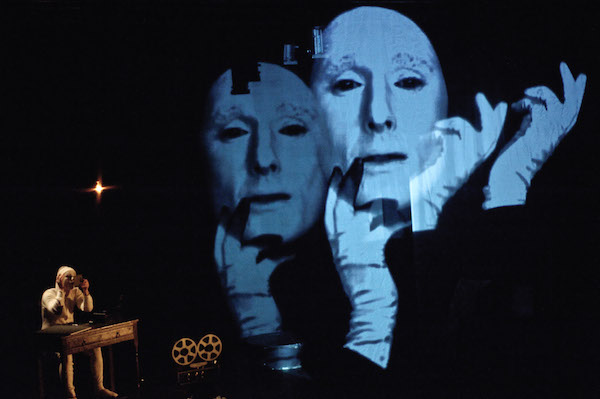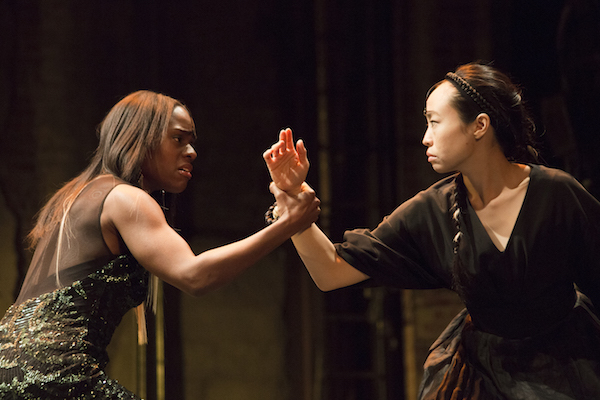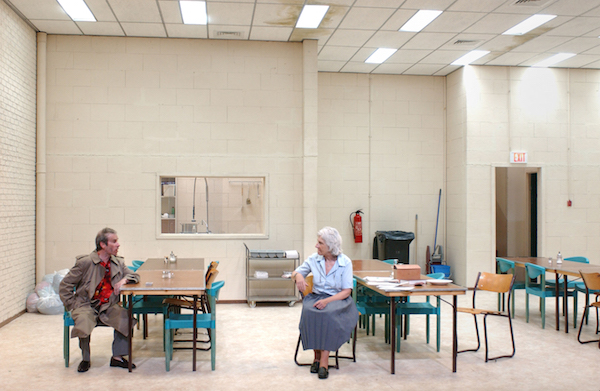
BY TRAV S.D. | When an arts organization is over a century old, even major things, such as a staff change, can seem transitory. In the case of the Abrons Arts Center and its outgoing Artistic Director Jay Wegman, the shift has the potential to be seismic. After a decade at the helm of Abrons, Wegman has left to take a post as Director at NYU’s Skirball Center for the Performing Arts. The legacy he leaves behind at Abrons is significant and widely admired.
The Abrons Arts Center turned 100 just last year. Its parent organization, the Henry Street Settlement, is even older (it was founded as a social services organization in 1893). Originally called the Neighborhood Playhouse, the space that evolved into the Abrons was part of the “Little Theatre” movement, with a mission of providing classical drama for area residents. The original 300-seat Playhouse is still in use, with the addition of newer playing spaces: the “underground” studio, a black box, and an amphitheater. In addition to its curated seasons, the Center also sponsors gallery exhibitions, education programs, summer camps, and artist residencies.

Into this venerated and venerable institution walked Wegman in 2006. Originally from Minnesota, he brought with him a background as an ordained Episcopalian priest and Canon for Liturgy and the Arts at the Cathedral of St. John the Divine.
“Jay came along when things were feeling sort of dry Downtown,” recalled Jennifer Miller, whose Circus Amok launched Abrons’ 2016/2017 season on September 11. “All of the creativity I had associated with the Lower East Side seemed to be drying up, and the emphasis at [key institutions like] PS122 and Dance Theater Workshop, seemed to be on expanding. Then I started hearing about stuff happening at Abrons. Jay revived it. He supported and nourished all kinds of queer and heartfelt and neighborhoody work, and I started to see things there.”
Said Wegman about those earlier years, “I was charged with revitalizing the theaters, so I started seeking out underserved, emerging artists — avant-garde performers who didn’t fit into just one genre and who needed a home, and who could benefit from the use of the space. This being New York City, I wanted to present work audiences wouldn’t see somewhere else. I love stuff that is whacked out — crazy, but a good crazy. Art that takes great risks. Later I got money to commission work and attract international artists, and so it gradually grew.”
One of the first artists he brought in was choreographer and neo-burlesque legend Julie Atlas Muz, whose memorable performances there included an X-rated version of “Beauty and the Beast” which she presented in collaboration with her husband, sideshow artist Matt Fraser; and “Sisters’ Follies: Between Two Worlds,” an irreverent celebration of the playhouse’s centennial co-starring drag artist Joey Arias and directed by the puppeteer Basil Twist.

“Jay has a keen eye and an adventurous spirit,” Muz told this publication. “He made Abrons feel like home for me. I live just down the road, therefore am a real local in the neighborhood. When Jay began his tenure, I had just moved into my apartment. He invited me to visit the theater; and since then, I always have felt very comfortable barging into his office with a question, a need for a hug, or wine, or sometimes chocolate to share… This wild man, with a very experimental and pure sense of theater, also really listens. That’s, I think, Jay’s true strength. He listens. He says yes. He is a dreamer. His curating style is about the artwork and the people, not about his ego or his vision.”
Another key Downtown company, Target Margin Theater, has developed and produced many works at Abrons over the years — including the Yiddish-language “The (*) Inn” and their upcoming “Mourning Becomes Electra,” which they workshopped a section of last season. According to David Herskovits, their artistic director, “Jay made the place incredibly hospitable. It’s a place to meet and work; much more a home than a rental house. You end up bumping into other artists working in the building, and building relationships over time, and that enhances the work.”
Wegman cites that climate of artistic fermentation as his greatest accomplishment at Abrons. “I loved it when artists popped into my office and would just hang out. I’m proudest of creating an atmosphere, a creative environment that was casual and hospitable,” he said.

As it happens, Wegman is leaving on the strongest of possible notes: an exciting season that includes a 150th anniversary revival of the seminal American proto-musical “The Black Crook” (Sept. 19–Oct. 7), London “drag fabulist” Dickie Beau in “Blackouts” (Oct. 6–15), a revival of Richard Maxwell’s “Good Samaritans” (Feb. 26–Mar. 24), and Target Margin Theater’s “Mourning Becomes Electra” (May 3–20).
As for his hopes for his new gig at Skirball, “I want [my programming there] to be as rigorous and challenging as the NYU curriculum, an extension of the classroom. I want to bring art that is not easily categorized and crack open the heads of students — and those of New Yorkers, as well.”
The Abrons recently announced the hiring of its new artistic director, Craig Peterson, whose credits include leadership positions at the Philly Fringe Festival and Gibney Dance. Where he will take the organization next is not yet known.
Abrons Arts Center is located at 466 Grand St. (btw. Pitt & Willett Sts.). For info, call 212-598-0400 or visit abronsartscenter.org. Facebook: facebook.com/AbronsArtsCenter. Twitter: @AbronsArtCtr.

















